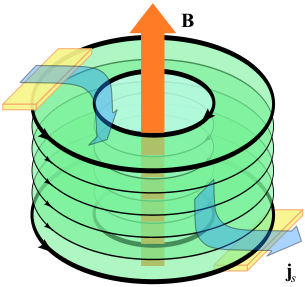Topological Superconductors and Majorana Fermions
Eytan Grosfeld
Majorana fermions have been ardently sought after in particle physics since their theoretical prediction in the 1930s. Conclusive experimental evidence for their presence is still lacking. Much of the focus has shifted in recent years to condensed matter physics, where Majorana states are expected to form on the edges of topological superconductors and carried by magnetic vortices through the superconductors. The presence of a Majorana state on the vortex core has far reaching consequences for the quantum statistics of the vortex: it increases the degeneracy of the quantum state in such a way that when two vortices are interchanged, the quantum state gets rotated in a non-trivial way. Detection of Majorana states and their induced vortex statistics requires the design of clever methods of probing the system, but the effort is worthwhile: their discovery can open a pathway to novel quantum computation schemes, largely immune to decoherence.
|
|
|


